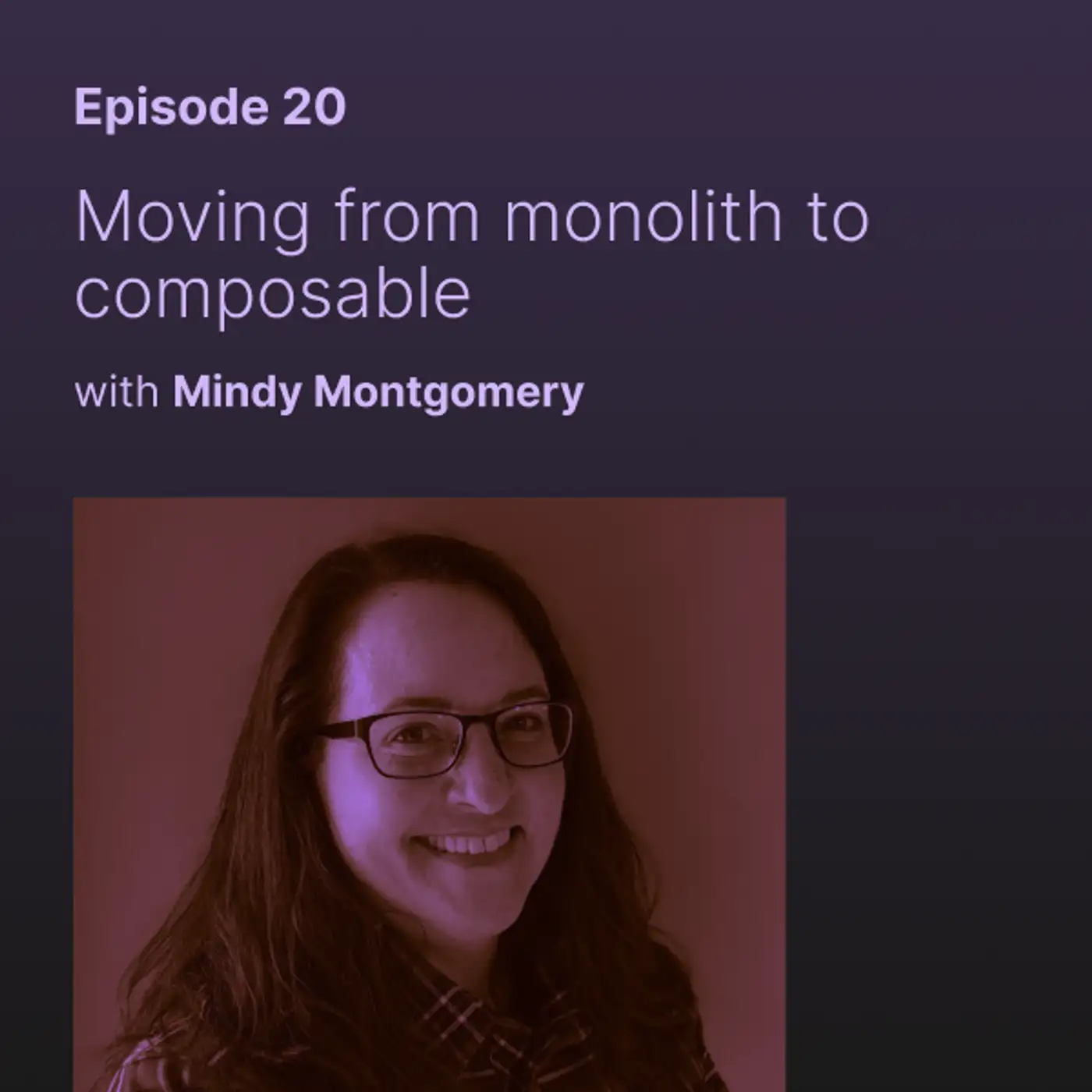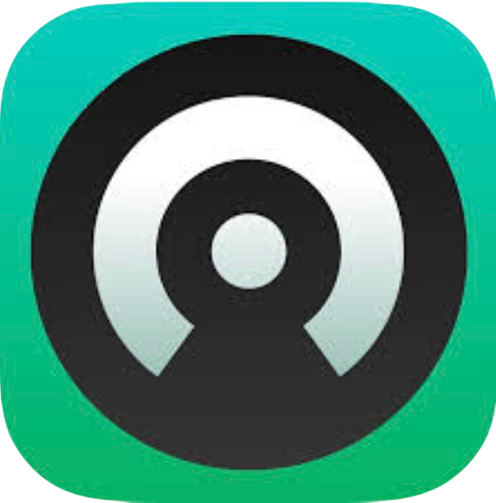
Moving from monolith to composable with ASICS' Mindy Montgomery
Moving from monolith to composable with ASICS' Mindy Montgomery

Learn about:
- The ASICS vision for the truly omnichannel customer experience
- How the company moved from a Salesforce monolithic platform to a composable stack
- What Mindy has learned about how to run RFPs quickly, efficiently, and effectively
Timestamps:
1:01 The ASICS omnichannel vision
2:30 The company's journey to eCommerce and composable technology
3:57 The brand promise that is driving technological strategy at ASICS
4:39 The composable model supporting future brand extensions inside the ecosystem platform
6:33 Moving off the monolith
8:11 What's next in eCommerce for the brand
10:09 Tips for surviving the RFP process
13:06 Trust your internal knowledge - and instincts when it comes to vendor conversations
Jasmin: The beautiful thing about composable technology stories is how differently every company's tech stack comes together. ASICS started with its brand promise and a reimagining of the customer experience that goes well beyond the store.
Mindy: If you come to ASICS.com, you should be able to find a training plan and purchase that and register for one of the races on many of the race registration platforms we own all in one place.
Jasmin: Senior Technical Product Manager, Mindy Montgomery, shares how that premise drove the move from monolith to composable for ASICS. You're listening to People Changing Enterprise. I'm your host, Jasmine Guthmann. Please enjoy this episode with Mindy Montgomery.
Mindy: There's this concept of there's no wrong front door, that's a model that the health and human services agencies are trying to adopt. When you go to sign up for food stamps, you should be able to access anything else you qualify for. That's the first step in the process to get there. Really making sure that you are fulfilling your promise as the health and human services agency to help people. And with our digital transformation and moving to headless and composable commerce, that's really the same principle, which is if you come to ASICS.com, you should be able to find a training plan and purchase that and use it in a Race Roster app and register for one of the races on many of the race registration platforms we own. All in one place. So instead of like, Oh, I go to Runkeeper and that's where I log my miles, but then I have to go to ASICS.com and remember to buy a new pair of shoes, to really make that a whole ecosystem and journey. So when your shoes hit 350 miles, we send you a discount code for ASICS.com that you can use right in the Run Keeper app to buy your next pair of shoes, enabling that e-commerce and content, you know, anywhere we possibly can. They don't have to necessarily be our channels. We wanna reach out, we wanna be a partnership across, you know, your running and sports journey, be that golf, tennis.
Jasmin: You just beautifully explained what ASICS is trying to do as a brand and what kind of customer experience you're trying to create. What has the company's journey to a composable architecture been like?
Mindy: Coming in, you know, within the past two years, it's been interesting to learn the history of how we got here. ASICS was pretty late to the D2C e-commerce marketplace, quite frankly, and because they had always envisioned their business as B2B, they sell shoes to running stores, and then consumers go to the running store and buy the shoes. They stood up the e-commerce marketplace fairly quickly and did it, you know, I would say the right way at that time, or a good way at that time. But now, you know, the world has changed, right? Consumer experiences have changed. Consumer expectations have definitely changed. I mean, you think about when online banking came out, which I think really kind of went hand in hand with e-commerce starting to take off. You know, you'd have people who were like, "I'm never gonna enter my credit card online," or "They'll pay online." No, "I'm writing checks." And now the number one reason why people don't switch banks is they don't wanna set up their automatic payments again. I mean, think about that change. And that's been in the past 20 years, that change in consumer behavior is really starting to drive not only how brands interact with consumers, but also what consumer expectations are of the brand. It's gotten a lot less casual in some cases than it used to be. You know, brand loyalty's a big thing, but it's not just, "Do they have shoes I like?" It's also, "Do I connect with that brand in some way?" What we've done is rebranded around. The founding concept of the company, which is a sound mind and a sound body, and that ASICS is actually Latin for that, or the acronym in Latin for that. And that's a lot of our branding campaign is around getting people to be active because of the demonstrated benefit of activity on mental health. That opens up a lot of opportunities for those composable stories because we can feed not only our products into that, but also the studies that we've sponsored and other experiences of our sponsored athletes, our employees, our brand ambassadors, to really help tell those authentic stories. So when we start talking about the journey to composable, I think it really starts with the foundation of, okay, we have to have this basic e-commerce platform. And now we're starting with the acquisition of Runkeeper, I think it was seven years, six or seven years ago. And then of these registration platforms, now we have this greater ecosystem around running specifically that will be extending to other sports because there can be lifelong involvement in sport. I think we have a good pattern. By building out the e-commerce platform and then adding pieces around that to be able to have those digital channels and those pipelines to get to consumers in different ways. So, if somebody's running a 5k, if they come in through Race Roster, which is our registration, one of our big registration platforms, do we care when they come in if they're buying ASICS at that point? No, because the acquisition happened at a race, so that we will engage them at that racing experience, not only through the registration process, but also offering to them training plans on Runkeeper, offering onsite commerce be that virtual commerce or actual commerce.
Jasmin: It's really meeting your potential customers where they are. You don't talk about yourself first. You talk about what they care about, and then yes, that that eventually potentially can turn into a sale, but it's not the hardcore lead gen effort that seems to be so popular these days.
Mindy: Yeah, and I think that that's one thing that we have that's unique amongst our competition. I'm not quite seeing that ecosystem. So the opportunity to really exercise that more is really compelling. But when thinking about, getting to that composable story, and building out a platform to get there. As I mentioned, we had a pretty big monolithic platform on Salesforce and as we look for opportunities and how to make that a little bit more efficient, and offer in new solutions, that's where the more of the digital transformation came into play in the technical transformation. So that journey really started with, from a planning and technology perspective of how can we open up this platform so that we have that integrated experience with Runkeeper, ASICS.com for e-commerce, and then Race Roster and the other race registration platforms so that we can have that omni-channel experience. And so the first step in that was like, all right, how do we build out APIs? So not only can all of the systems that function in our e-commerce world talk to each other in more efficient ways and really settled on MuleSoft as that integration and orchestration layer. We've implemented that for these systems to talk to each other, pull the logic out of those end systems and centralize it. So if the opportunity comes to add or change out a solution, it's really changing APIs and not, getting the system and then spending all the time. Looking at, okay, how do we put the logic in this system when it doesn't necessarily need to be there? It's really a scale and an opportunistic approach that we're taking, and I think that's really smart. And moving to Contentstack really, I think, empowers us to do that by centralizing into one place our content management, but also having the open APIs and the capability to then allow our own apps and trusted third-party partners to have access to that content so we can promote across, you know, have a true omnichannel experience.
One of the solutions we're looking to add is a true user-generated content management, and that's something that the marketers and I have been talking about is not only engaging those users and having those brand ambassadors be on board, but that's just our vision of our brand and how we think our brand should be put out there. But the other side of that, especially important in building that consumer relationship with the brand is, okay, what are people saying about us? How do they view us in their lives with the lens of mental health on there, and having those authentic user stories be told through our customer's voices and blending that with the data and studies and the white papers that we've sponsored, that consumer voice is absolutely necessary. So when we add that, that will be one of the primary things on the procurement is do you have, standard APIs that are available for use, and do you support a composable and headless solution, or approach to offering products in channel. And that's sort of a paradigm shift. And so that gets to be a little bit uncomfortable when you're like, but we have.com and people can buy our shoes there. And it's like, that's not the only channel we have. We wanna have that and storytelling so somebody doesn't have to remember, uh, you know, there's the intent, right? There's an intention to buy. If they can't buy right there, the likelihood of them remembering to go to ASICS.com later and buy. You know, your frontal goes from real wide to real narrow really, really quickly. , there's a couple of things that we have in the pipeline that will enable us to sell on social that I think is really exciting, cuz I know that that's, that's where a lot of conversion is being seen.
Jasmin: I would love to ask a follow-up question on building a tech stack because I think a lot of the people that are listening work for brands were maybe considering moving to composable, but are concerned about, the total number of vendors you're going to have to deal with, and, a lot of contracts and RFPs. Do you have any tips for, the RFP process, how to make the right decision?
Mindy: So really what you wanna do is, you just need to start. There is a fair amount of enormity, paralysis involved. Product is sort of the convergence of customer technology and design. And so really look at, you know, what types of things need to go into that RFP to make sure that you have the content that you want. You don't have to take on all the work yourself. There does need to be somebody leading it, but that can be somebody from your PMO or a project manager. I think probably one of the better people is a business analyst because they're gonna be the ones writing the requirements anyway. Rely on your partners, ask your partners for help. For people who have done that before, But you know, you gotta get started and the the best place to start is do market analysis, talk to your peers, reach out to people. And see what they're doing. So I've talked to probably, I think three or four companies and of all different types of brands, and it's amazing how all of us are kind of getting to composable at the same time. So it's a lot of, we built the monolith to get it up and running. Now we wanna break it apart because we know we need to do engagement and you know, what are some of the things that you need to do to do that? And if you're really looking at how do you break it up and how do you find the solutions you want, we should approach this from the perspective of we should be able to, in the end state of being composable, we should be able to pick up and replace any component of our stack up to and including Salesforce. What are the guiding principles behind it? It has to be API driven, has to be as much as possible, headless, and at least support a headless architecture so you aren't locked into somebody else's UI. And then what are your compliance and security needs beyond that, so you can do a lot of pre-work and a lot of educational work and a lot of the vendor and landscape assessment a little bit at your leisure for user-generated content management. As an example, over the past 16 months, I've had very casual conversations with six or seven vendors in that space, all of which was building up to eventually this RFP we're gonna issue and if there's a trusted relationship established already, the conversations can be a lot more open and frank than if you just go fill out the contact us form.
Jasmin: Oh absolutely and as everything in life. I'm trying to say it's, it all boils down to relationship really, doesn't it? So if you do your due diligence and you, you know, make good choices about who you are going to reach out to in the first place, chances are you will have better conversations that may lead you to different requirements because when you start out, You don't know what you don't know, but I love what you said earlier. It's all about getting started and then getting started will get you the information that you need to, to arrive at a conclusion.
Mindy: and you'll find out fairly quickly in a short 30-minute call if the solution's gonna be right for you. And it's not really about did you get a good salesperson or not. It's really just you can gauge what their approach is, what their thought process is. We had a call the other day where a vendor was saying, Well, we understand that you've done this loyalty summit and you, um, have gotten feedback from users about what they like, and that's all fine and good, but you should really engage our strategy team and in the Slack channel. I said we could probably skip the demo. This is really them saying they've built a platform that works in one particular way, and that's how they want you to use it. And they're not gonna build us something or be flexible enough for us, us to use it. And it's interesting cuz, 15 years ago in my career, I probably would've been like, "Yeah, we should talk to their strategy team. Maybe they know," so that's another thing I guess about the RFP process is you need to have that diversity of experience. You really wanna have somebody else on the call with you to kind of rein you in and not be like, we're buying it right now.
Jasmin: Absolutely. You always want multiple people involved because the more experience you can get around the table, the better the decision is probably going to be. Thanks for listening to People Changing Enterprises. We'll be back next week with a new episode, helping you make your mark.
Listen anywhere
More options



